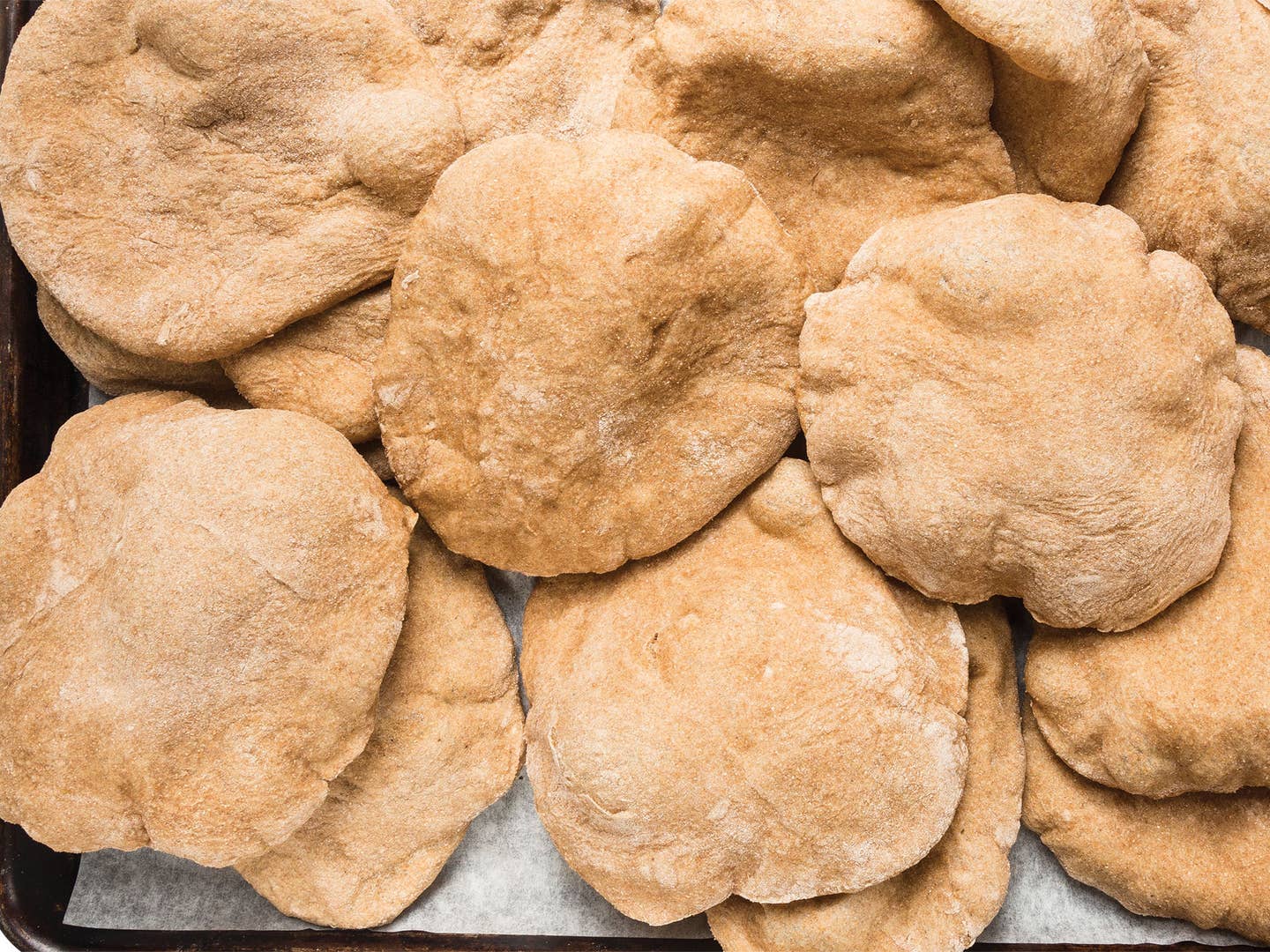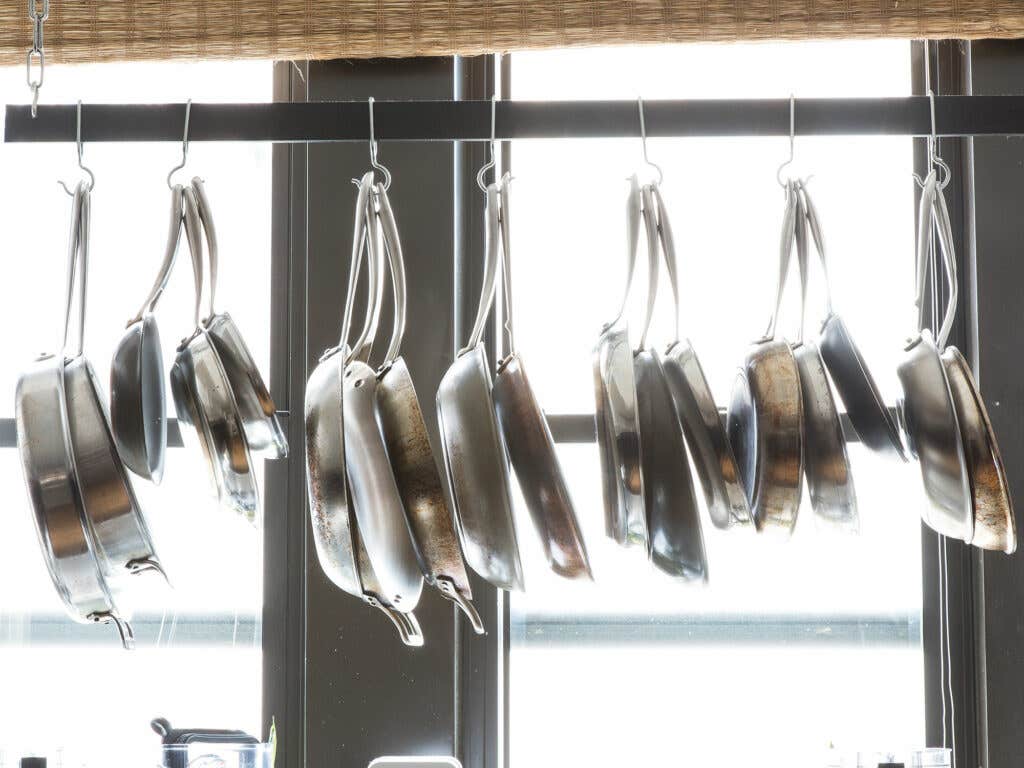
From the Saveur Test Kitchen: Issue 176

For this issue our test kitchen discovered the joys of garlic milk, learned that not all clams are equal, and mastered the art of making of Cairo's beloved bread.
Hello, Garlic Milk
Why our new favorite ingredient should be yours, too
We were surprised to learn that for her summer garage party (see: The Enlightened Entertainer) Amy Thielen included milk in the parsley bagna cauda she made to accompany her tender roast pork shoulder. Turns out it's not that untraditional—northern Italians sometimes add cream to the anchovy, garlic, and olive oil sauce before serving it as a dip for raw vegetables and toast. In Thielen's recipe, the concentrated milk, cooked down slowly with garlic cloves, makes the bagna cauda a perfect balance for the roast pork, but we love the sauce on other meats as well, like chicken and steaks. Inspired, we also used leftover garlic milk to make mashed potatoes and in béchamel for lasagna, and it worked perfectly.
Clams: A Prime
How to recognize and get the most out of summer's best shellfish

Test Kitchen Tip: We love Amy Thielen's trick of chopping small amounts of whole cumin seeds with a couple of drops of oil for her smoky baba ghannouj. It breaks down the seeds without dirtying a grinder and infuses the oil with its flavor.—Ben Mims, Food Editor
Egyptian Flatbread (Aish Baladi)
Similar to pita, but made with whole wheat flour, this Egyptian flatbread is traditionally baked in scorching-hot ovens in Cairo’s bustling markets. Home cooks can achieve similar results with a baking stone and an oven cranked to high.
The Key to Aish Baladi
To get these Egyptian flatbreads to puff properly, crank up the heat
Coming from the word balad, meaning "my country" or "my people," aish baladi ("the people's bread") is such a staple in modern Cairo that the government subsidizes it. (Politicians have even used it to court votes.) Similar to pita but made with whole-wheat flour, traditional aish baladi is baked on the floors of giant scorching-hot ovens in the city's bustling market bakeries. You can achieve similar results at home by placing a baking stone in your oven and letting it heat until it's scorching. This ensures that the stone is hot enough to instantly steam the water in the dough, a crucial factor in the bread's puffing up. Equally important is the thinness of the dough, which should be rolled out to 1/6-inch thick. A thin skin forms, which traps the steam, inflating the bread once it hits the searing stone.
Keep Reading
Continue to Next Story










